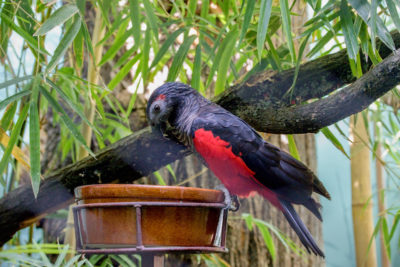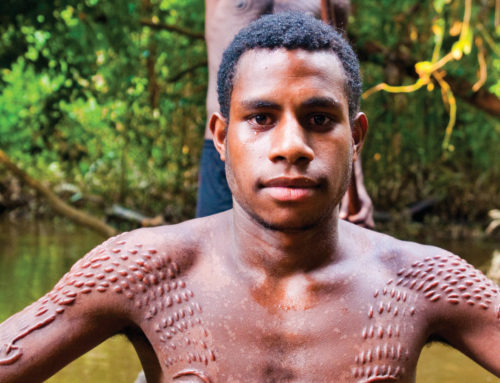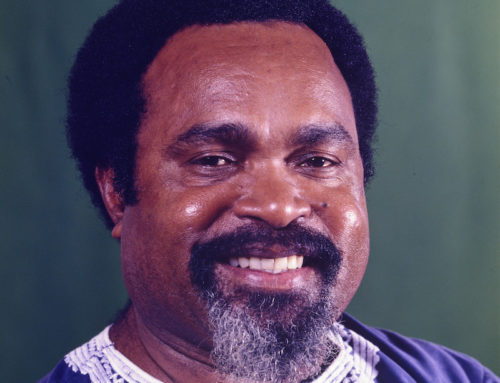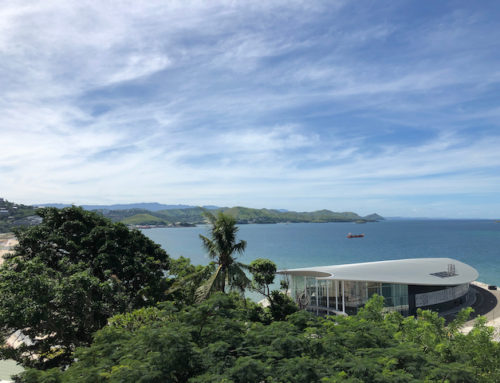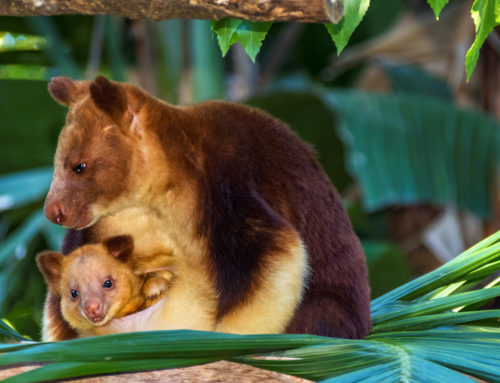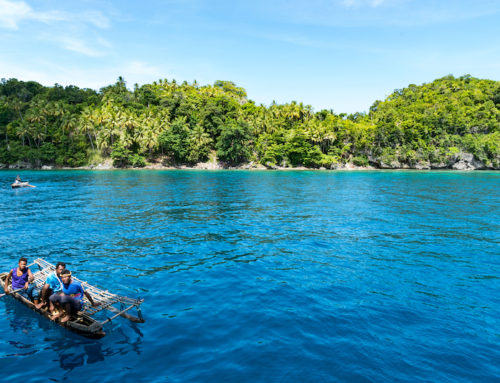The push to save Pesquet’s Parrot
Thursday, 25th February 2021
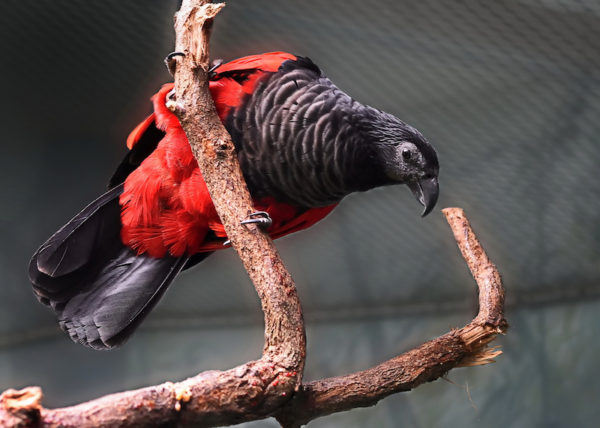
For bird lovers, Papua New Guinea is considered a pristine paradise which offers the opportunity to sight some of the most ornate and fascinating birdlife in the world.
Among them is Pesquet’s parrot – a rare and threatened parrot known for its black and crimson feathers. Now there’s a push to save this parrot from extinction.
Pesquet’s parrot
Also known as the Dracula parrot or vulturine parrot, Pesquet’s parrot does indeed conjure up images of Count Dracula and his striking cape. With a featherless face, this large parrot measures up to 46cm in length, is predominately black with grey scaling but features a bright red belly and wings.
With a diet the consists primarily of figs, flowers and nectar, it is believed the parrot evolved to have a bare face in order to stop its head feathers being matted by sticky nectar.
Meanwhile, the bird’s small headed appearance and its large, hooked bill gives it a vulture like appearance that has given rise to its nickname as the vulturine parrot.
The only member of its genus, Pesquet’s Parrot is endemic to the rainforests of Papua New Guinea, and its feathers have traditionally been highly prized for both local headdresses and the international millinery trade.
That has seen the Pesquet’s parrot population decline rapidly with only 21,000 pairs estimated to be left in existence.
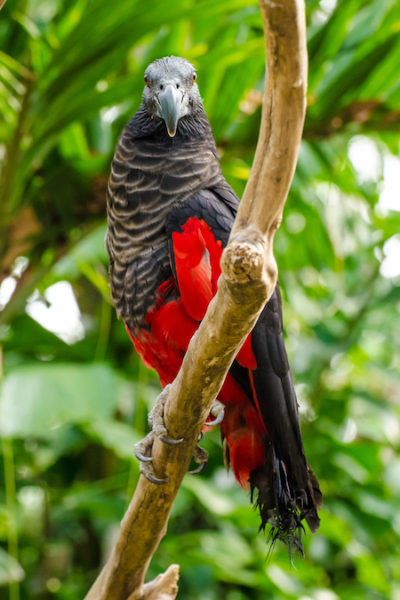
A charismatic creature
Pesquet’s parrot is renowned for its charisma, but little is known about its breeding habits in the wild. Typically it lays only two eggs, which it secretes in the hollow of a tree.
A frugivore, its diet is restricted to only a few species of figs, flowers and nectar.
Prized for its feathers
For over 2000 years, other countries have traded with Papua New Guinea in search of the stunning feathers found on the nation’s unique birds. The striking crimson feathers of the Pesquet’s parrot has seen it among those sought after.
This demand reached a peak during the ‘plume bloom’ of the 1900s to 1920s which resulted in millions of birds, including PNG’s Bids of Paradise being harvested.
Within PNG, this plumage has also been prized, with an estimated 800 cultures using feathers as part of their headdresses and ornamentation.
In the highlands region, the vibrant red feathers of Pesquet’s Parrot typically make up the surface of the headbands.
In fact, PNG’s longest standing conservation group, WCS PNG estimates in the single district of Kerowagi in Chimbu Province, up to 160,000 ‒ 280,000 Pesquet’s Parrots have been harvested for the headdresses currently in use, while a further 3200 Pesquet’s Parrots are killed annually.
The push to conserve Pesquet’s parrot
With this unique parrot now classified as vulnerable by the International Union for Conservation of Nature, there is now a push for the bird’s conservation.
Strategies include education along with practical initiatives. For example, WCS PNG is working with local communities to better preserve traditional headdresses in a bid to decrease demand for new feathers.
Their initiative features preservation kits that comprise heavy duty plastic, mothballs and paper to protect the headwear against mould, mouse and insect damage.
Meanwhile in 2016, the Paga Hill Development Company (PHDC) teamed up with the Port Moresby Nature Park to sponsor and help open a very special Pesquet’s Parrot exhibit.
The exhibit aims to raise awareness and educate Papua New Guineans and tourists alike on balancing the preservation of parrots in the wild, while still maintaining the culturally significant tradition of using Pesquet’s feathers for Bilas (a traditional PNG costume).
About Paga Hill Estate
Paga Hill Estate is a world-class, master-planned estate in the heart of Port Moresby, Papua New Guinea. The waterfront site is the first comprehensively planned multi-use development in Papua New Guinea to be enjoyed by both residents and visitors alike.
The all-inclusive development will include vibrant public spaces and waterfront promenade, luxury hotels, residential apartments, restaurants, retail, commercial space, a Trade, Exhibition & Cultural Centre, restoration of WWII relics, marina precinct and a nearby international cruise liner terminal.

